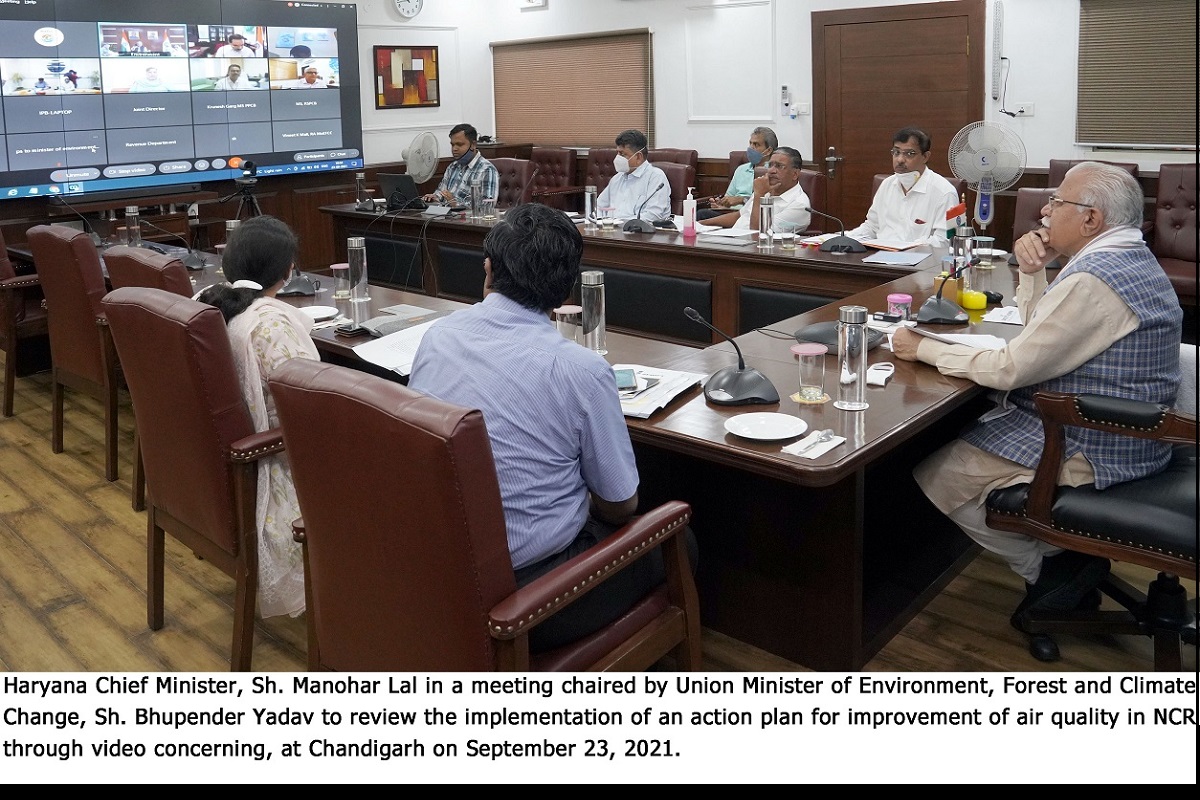Haryana takes major stride towards implementing 3 new criminal laws
New scheme 'Haryana Witness Protection Scheme, 2025' launched.
The CM said villages have been categorized into red, yellow and green zones in terms of incidences of crop residue burning based on the data provided by the Haryana Space Applications Centre (HARSAC) to the agriculture and farmers’ welfare department.

Besides providing an incentive rate of Rs 1000 per acre on paddy, villages in Haryana have been categorised into red, yellow and green zones to prevent stubble burning in the state.
Speaking during a high-level meeting chaired by Union minister of environment, forest and climate change Bhupender Yadav to discuss the implementation of an action plan for improvement of air quality in National Capital Region ahead of the approaching winter season, when the incidences of stubble burning tend to increase leading to a dangerous rise in levels of air pollution, Haryana Chief Minister Manohar Lal Khattar said a detailed action plan has been prepared for the prevention of crop residue burning in the current season. This meeting, held through video conferencing, was attended by Delhi, Punjab, Rajasthan and Uttar Pradesh.
Advertisement
The CM said villages have been categorized into red, yellow and green zones in terms of incidences of crop residue burning based on the data provided by the Haryana Space Applications Centre (HARSAC) to the agriculture and farmers’ welfare department.
Advertisement
Khattar said Haryana is providing assistance on Crop Residue Management (CRM) machines that is 50 per cent for individuals and 80 per cent for Custom Hiring Centers. It was informed that applications invited in the first phase have been processed by deputy commissioners concerned, and all the applicants in red and yellow zone villages have been allowed to purchase the machines.
In the second phase applications from red and yellow zone villages have been invited till 25 September and the same will be processed on 28 September by deputy commissioners. The nodal officers are being deployed at district, sub-division, block, village level and mapping of the available panchayat common land is being made for storage of baled residue for ex-situ use, Khattar said.
The CM said biomass power projects to the tune of 64.3 MW (megawatt) consuming 2.37 lakh MT (metric tonne) of paddy straw and another 2.41 lakh MT of paddy straw is being used by other industries. Another six biomass Power Projects of 60.35 MW production capacity, with a capacity to utilize 6.4 lakh MT of paddy straw and one compressed biogas plant of 12.5 Tonnes per Day capacity which can use 40,000 MT of paddy straw are under installation.
Further a project on Ethanol Production has also been under installation, with a production capacity of 100 KLPD and a utilization capacity of 2 Lakh MT of paddy straw. Khattar said the total area under paddy in Haryana is 34.10 lakh acres (57 per cent Basmati and 43 per cent Non-Basmati). The area has been reduced up to 10.7 per cent in comparison to the previous year.
Advertisement